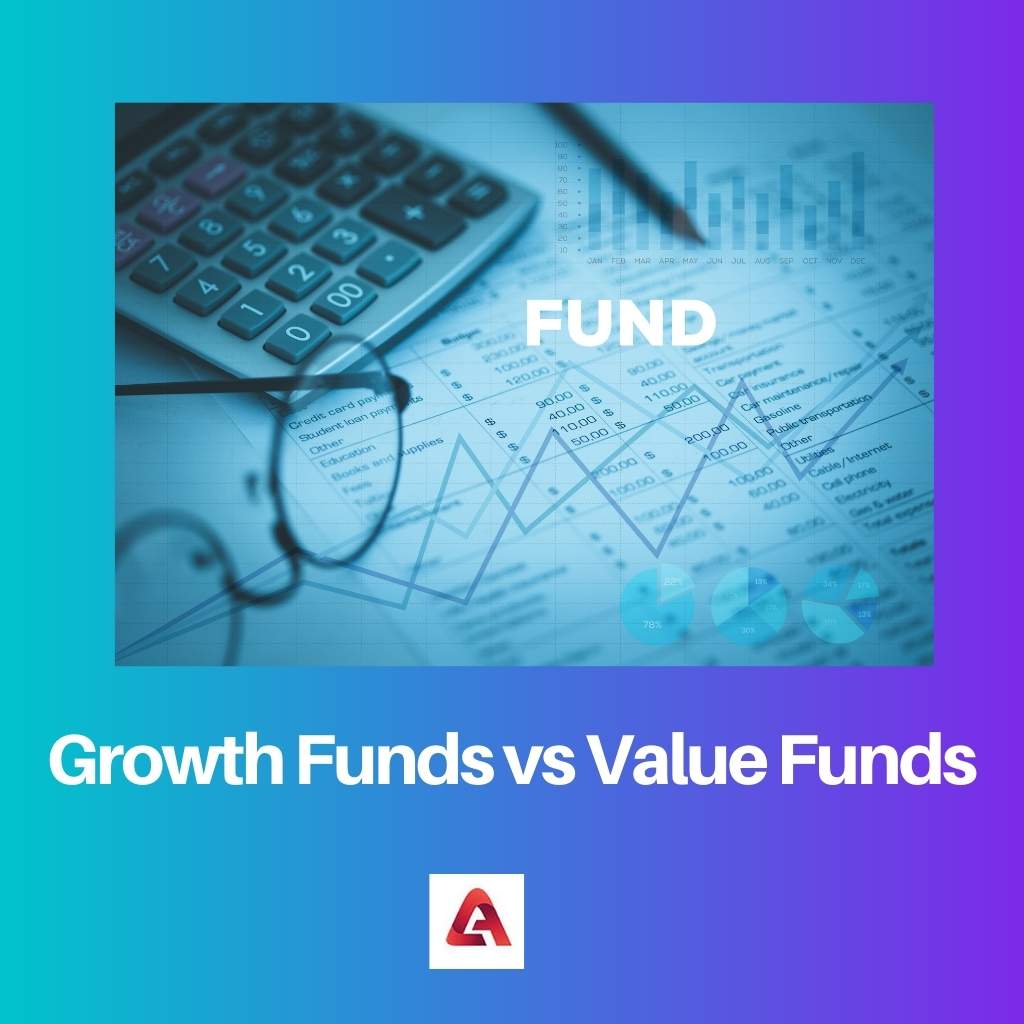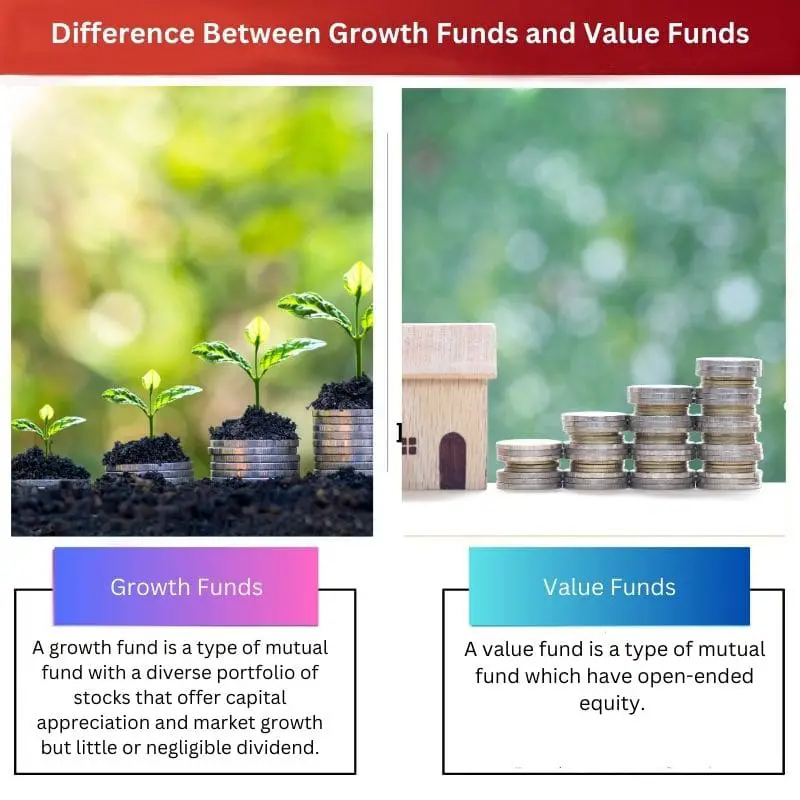Assets that are purchased to make passive or active income from that can be termed business investments. These assets can have several risk factors involved.
The most common type of investments in business or an asset class is growth funds and value funds.
Key Takeaways
- Growth funds focus on investing in companies with high potential for capital appreciation, while value funds invest in undervalued companies that may be underperforming.
- Growth funds tend to have higher risk and reward potential, while value funds offer lower risk but may yield more modest returns.
- Growth funds invest in rapidly expanding industries, while value funds seek established companies with stable dividends and strong financials.
Growth Funds vs Value Funds
Growth funds invest in stocks of companies that are expected to grow at a faster rate than the overall market. These companies are in their early stages of development. Value funds invest in stocks of companies that are considered to be undervalued by the market. These companies are more established and have lower earnings growth rates.

Growth funds can be termed as a portfolio of stocks that have higher potential capital appreciation at risk of above-average. The investments go into acquisition, expansion, or research and development.
A growth fund is a mutual fund or Exchange-Traded fund (ETF) where the pace of growth is higher comparatively.
While value funds are equity mutual funds of stocks that are underperforming but have the potential to perform better in the future due to various factors like the business model and management and the current competitive position.
The scope of growth is high, and the stocks provide a higher dividend to the investors.
Comparison Table
| Parameters of comparison | Growth Funds | Value Funds |
|---|---|---|
| Stock performance | Better-than average | Below-than average |
| Stock priced at | Overvalued or highly- priced | Undervalued or power priced |
| Risk | High risk | Moderate to low risk |
| Principle | Capital appreciation | Growth due to intrinsic value |
| Dividend | Lower | Higher |
What is Growth Funds?
A growth fund is a type of mutual fund with a diverse portfolio of stocks that offer capital appreciation and market growth but little or negligible dividends. An investor of growth funds needs to have a high-risk tolerance and a longer holding horizon.
Growth funds can be further classified into small-, mid-, and large-cap according to market capitalization.
Growth funds function on the policy of “high risk – high reward”. Stocks with high P/E and P/S ratios fit perfectly under the growth fund domain.
Stocks of medium to large companies have a steady ebb and flow and have the potential to provide higher returns, while stocks of a small company can fluctuate wildly and portray aggressive growth.
They do offer high returns but also need a high-risk tolerance of the investor.
While choosing any growth fund, an investor should not be tempted by any recent success or failure but analyze the performance over a long-term period.
The stock’s volatility should match the investor’s risk tolerance to be an ideal choice.
The returns of a growth fund are provided through capital gains and not dividends because relatively low dividends by fast-growing companies and the dividends are taxed differently.

What is Value Funds?
A value fund is a type of mutual fund which have open-ended equity. Value funds work on the basic principle of investing in stocks that are undervalued but have the potential to perform better shortly.
These funds are below their actual price for several reasons, like inherent inefficiencies. The intrinsic value of these stocks is growth and hence offers higher dividends to their investors.
An ideal investor of Value funds should have a high-risk tolerance (because of unsure growth), a longer investment horizon (because the stocks take a certain period to show considerable growth), and patience.
Value funds may not look promising but have a higher potential for performance and growth. Value funds generate greater returns and give exposure to a diverse portfolio.
The undervalued stocks are also less undervalued, and hence value funds are the common choice of angel investors like Warren Buffet.
The value funds also provide a sense of margin safety. For beginner investors, Value funds help in creating a portfolio with inexpensive stocks of great companies for a long period of investment and have higher yields.
Value funds are also synonymous with value investing, and it is a reliable investment opportunity.

Main Differences Between Growth Funds and Value Funds
- The Growth funds perform on the principle of capital appreciation and market growth, while Value funds work on the principle of undervalued stocks growing due to intrinsic value.
- Growth funds involve high-risk tolerance and volatility of the investor, while value funds involve moderate to low-risk tolerance of the investor.
- Growth funds offer lower dividend yield, while value funds offer higher dividend yield to the investor.
- Growth funds show growth during bull markets or economic expansion, while value stocks tend to outperform during an economic recession or bull markets.
- Growth funds showcase a better-than-average performance from the market, while value funds have a below-than-average performance comparatively with the other market stocks.
- Growth funds look exciting due to the recent results or performance, but Value funds do not look as exciting as growth funds yet have a higher potential to grow.






